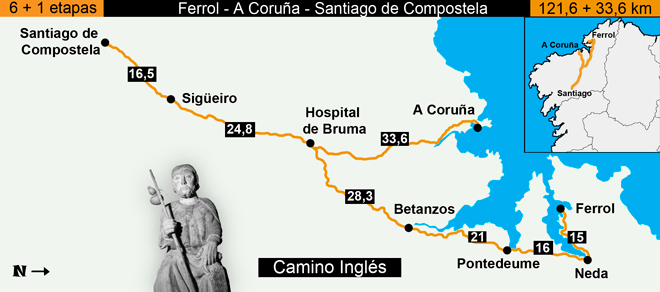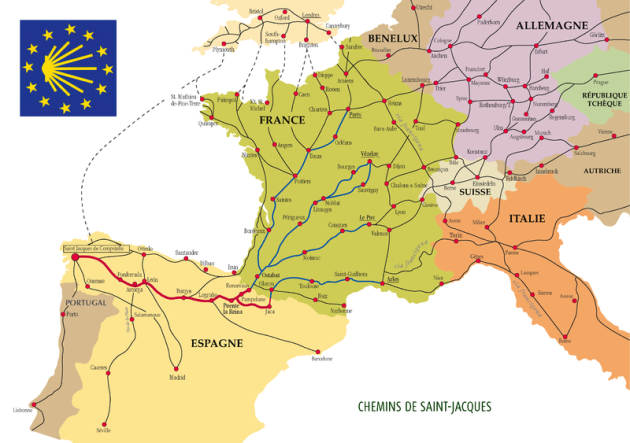You may have been wondering about the several day long silence on my blog which happened because I was in Spain from the 1st-10th September walking the Camino Ingles.

Image taken from http://www.pilgrimagetraveler.com/camino-ingles.html
This Camino is the shortest of the ways and starts in Ferrol from where it is about 120km to Santiago (an alternative is starting from A Coruna but at only about 80km this route is too short to gain the Compostela).
The Camino Ingles is the 'English way' as it is where many Pilgrims who took the boat from England (or from Scandinavian countries) would land before heading to Santiago and the route heads essentially South around the Ferrol bay before heading to Pontedeume, Betanzos, Bruma and Segueiro passing through some beautiful countryside on the way - a lot of the eucalyptus forests that walkers of the Frances route from Sarria will be familiar with but this way is more difficult with longer stages (due to little choice with accommodation) and a lot of hills: as my Dad put it if you weren't going up then you were going down to soon go up again!

Ships would usually sail from Plymouth (Image taken from https://almentzer.files.wordpress.com/2013/06/st-jacques-compostelle1.png?w=630&h=443)
I did hope to blog live on the way but few places had WiFi so I have written about my Camino as soon as I returned.

Image taken from http://www.pilgrimagetraveler.com/camino-ingles.html
This Camino is the shortest of the ways and starts in Ferrol from where it is about 120km to Santiago (an alternative is starting from A Coruna but at only about 80km this route is too short to gain the Compostela).
The Camino Ingles is the 'English way' as it is where many Pilgrims who took the boat from England (or from Scandinavian countries) would land before heading to Santiago and the route heads essentially South around the Ferrol bay before heading to Pontedeume, Betanzos, Bruma and Segueiro passing through some beautiful countryside on the way - a lot of the eucalyptus forests that walkers of the Frances route from Sarria will be familiar with but this way is more difficult with longer stages (due to little choice with accommodation) and a lot of hills: as my Dad put it if you weren't going up then you were going down to soon go up again!

Ships would usually sail from Plymouth (Image taken from https://almentzer.files.wordpress.com/2013/06/st-jacques-compostelle1.png?w=630&h=443)
I did hope to blog live on the way but few places had WiFi so I have written about my Camino as soon as I returned.
Comments
Post a Comment